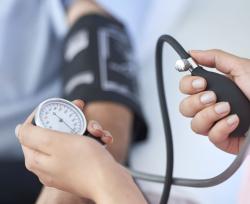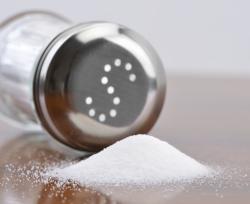- Programmi
- Visite
- Salute A-Z
-
Chi siamo
-
Medici
-
Aziende
- Indietro
- Magazine salute
- L’esperto risponde
- Indietro
- Farmaceutiche
- Welfare
- Assicurazioni
- Indietro
- MMG/PLS
- Specialisti
- Indietro
- La nostra storia
- Team
- Blog
- Certificazioni
- Newsletter
- Careers


Esperto Risponde
Ipertensione e terapia
Sono la mamma di un bambino di 5 anni alla quale da RMN è stata riscontrata una stenosi arteria renale sx. Questo esame si è reso necessario dopo che da un controllo pediatrico ci si è accorti che il bambino aveva una pressione di 120/80 (troppo per la sua età) e da Holter Pressorio delle 24 ore si sono verificati picchi di 180/90 nelle ore di sonno (notte) fortunatamente di breve durata. Preciso che la pressione non è sempre alta, infatti seguendo un calendario pressorio così come mi è stato consigliato dai medici, misurandola in giorni, ore e momenti diversi della giornata, risulta spesso nella norma. La domanda che vi pongo è: c'è la speranza di poter correggere questo difetto visto che mi dicono che per un bambino è una malformazione rara, ed in tutta italia ci sono pochi chirurghi vascolari pediatrici. Mi potete dare un consiglio, ed indicarmi eventuali centri specializzati per questo tipo di malformazioni. Mi sapete indicare un sito internet dove mi posso collegare e trovare tutte le delucidazioni del caso, visto che a tutt'oggi non riesco a trovare niente che mi documenti. Per favore fatemi avere quanto più notizie possibili. GRAZIE.
Risposta del medico
Negli ultimi anni il trattamento della stenosi dell’arteria renale (e dell’ipertensione associata) si è venuto sempre più frequentemente effettuando senza intervento chirurgico, ma con angioplastica con impianto di stent. Anche in ambito pediatrico, ove comunque quest’affezione è abbastanza rara, esistono delle casistiche che sono state trattate in questo modo in alcuni centri europei, con risultati a lungo termine però non del tutto soddisfacenti (si veda il riassunto allegato relativo alla casistica più recente). In ogni caso, il consiglio è di rivolgersi all’Urologia e/o Chirurgia Vascolare di riferimento per affrontare i pro e contro ed i tempi di un eventuale approccio terapeutico con angioplastica e stent.
Angioplasty for renovascular hypertension in children: 20-year experience.
Shroff R, et al.
Department of Nephrourology, Great Ormond Street Hospital for Children, Renal Office, Frontage Building,
Great Ormond Street, London WC1N 3JH, United Kingdom.
OBJECTIVE: Our aim was to evaluate the clinical outcomes, safety, and efficacy of percutaneous transluminal angioplasty for renovascular hypertension in children. METHODS: A retrospective review of data for all children with renovascular hypertension who underwent percutaneous transluminal angioplasty at a single center between 1984 and 2003 was performed. Patients with renal transplants and inflammatory multisystem diseases were excluded. RESULTS: Thirty-three children, 1.9 to 17.9 years of age (median: 10.3 years), underwent renal angioplasty and/or stenting. Underlying syndromes were present in 10. On angiograms, 16 had bilateral renal artery stenosis, 15 intrarenal disease, 8 aortic stenosis, and 7 cerebrovascular disease. Forty-eight percutaneous transluminal angioplasty procedures were performed, including 15 stenting procedures. There was a high rate of restenosis after stenting (7 of 19 cases, compared with 2 of 27 cases after balloon dilation). Outcomes were cured (ie, blood pressure normal without treatment) for 9 patients, improved blood pressure with same or reduced treatment for 7, blood pressure maintained in >95th percentile because of cerebrovascular disease for 2, no change in blood pressure despite technical success for 10, and technical failure for 5. Blood pressure control improved in 11 of 13 children who had main renal artery disease alone and in 6 of 20 with associated intrarenal disease or stenoses in other vascular beds. There was 1 procedure-related death and 5 minor complications. CONCLUSIONS: Angioplasty produced clinically worthwhile improvement for approximately 50% of patients. High incidence rates of extrarenal involvement and intrarenal disease and a high restenosis rate after stenting accounted for poor blood pressure control in the rest.
Angioplasty for renovascular hypertension in children: 20-year experience.
Shroff R, et al.
Department of Nephrourology, Great Ormond Street Hospital for Children, Renal Office, Frontage Building,
Great Ormond Street, London WC1N 3JH, United Kingdom.
OBJECTIVE: Our aim was to evaluate the clinical outcomes, safety, and efficacy of percutaneous transluminal angioplasty for renovascular hypertension in children. METHODS: A retrospective review of data for all children with renovascular hypertension who underwent percutaneous transluminal angioplasty at a single center between 1984 and 2003 was performed. Patients with renal transplants and inflammatory multisystem diseases were excluded. RESULTS: Thirty-three children, 1.9 to 17.9 years of age (median: 10.3 years), underwent renal angioplasty and/or stenting. Underlying syndromes were present in 10. On angiograms, 16 had bilateral renal artery stenosis, 15 intrarenal disease, 8 aortic stenosis, and 7 cerebrovascular disease. Forty-eight percutaneous transluminal angioplasty procedures were performed, including 15 stenting procedures. There was a high rate of restenosis after stenting (7 of 19 cases, compared with 2 of 27 cases after balloon dilation). Outcomes were cured (ie, blood pressure normal without treatment) for 9 patients, improved blood pressure with same or reduced treatment for 7, blood pressure maintained in >95th percentile because of cerebrovascular disease for 2, no change in blood pressure despite technical success for 10, and technical failure for 5. Blood pressure control improved in 11 of 13 children who had main renal artery disease alone and in 6 of 20 with associated intrarenal disease or stenoses in other vascular beds. There was 1 procedure-related death and 5 minor complications. CONCLUSIONS: Angioplasty produced clinically worthwhile improvement for approximately 50% of patients. High incidence rates of extrarenal involvement and intrarenal disease and a high restenosis rate after stenting accounted for poor blood pressure control in the rest.
Risposto il: 19 Ottobre 2006




